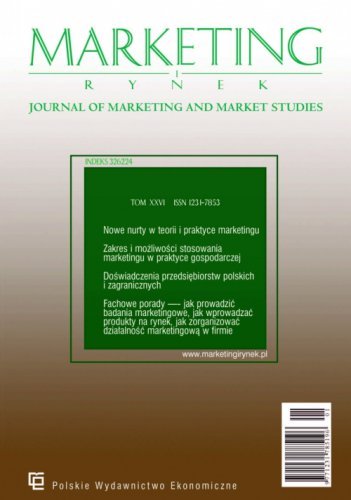Journal of Marketing and Market Studies 10/2023
ISSN: 1231-7853
Pages: 53
Publication date: 2023
Place publication: Warszawa
Binding: paperback
Format: A4
Publication date: 2023
Place publication: Warszawa
Binding: paperback
Format: A4
DOI: 10.33226/1231-7853.2023.10.1
JEL: M30, D12
DOI: 10.33226/1231-7853.2023.10.2
JEL: M30, D12, G52
DOI: 10.33226/1231-7853.2023.10.3
JEL: M31, F23, L25
DOI: 10.33226/1231-7853.2023.10.4
Dr Andrzej Szymkowiak, Dr Marcin Adam Antoniak, Mgr Krzysztof Bokwa, Mgr inż. Tomáš Vlčko, Mgr Iwo Jarosz, Dr hab. inż. Piotr Kulawik, Prof. dr inż. Jozef Golian
JEL: D10, D91, I12, M31, M38
DOI: 10.33226/1231-7853.2023.10.5
JEL: Q56, F18, F64, O13
| Odbiór osobisty | 0 € |
| Kurier Inpost | 4 € |
| Kurier FedEX | 4 € |
| Inpost Paczkomaty | 4 € |
| Free delivery in Reader's Club | from 47 € |

